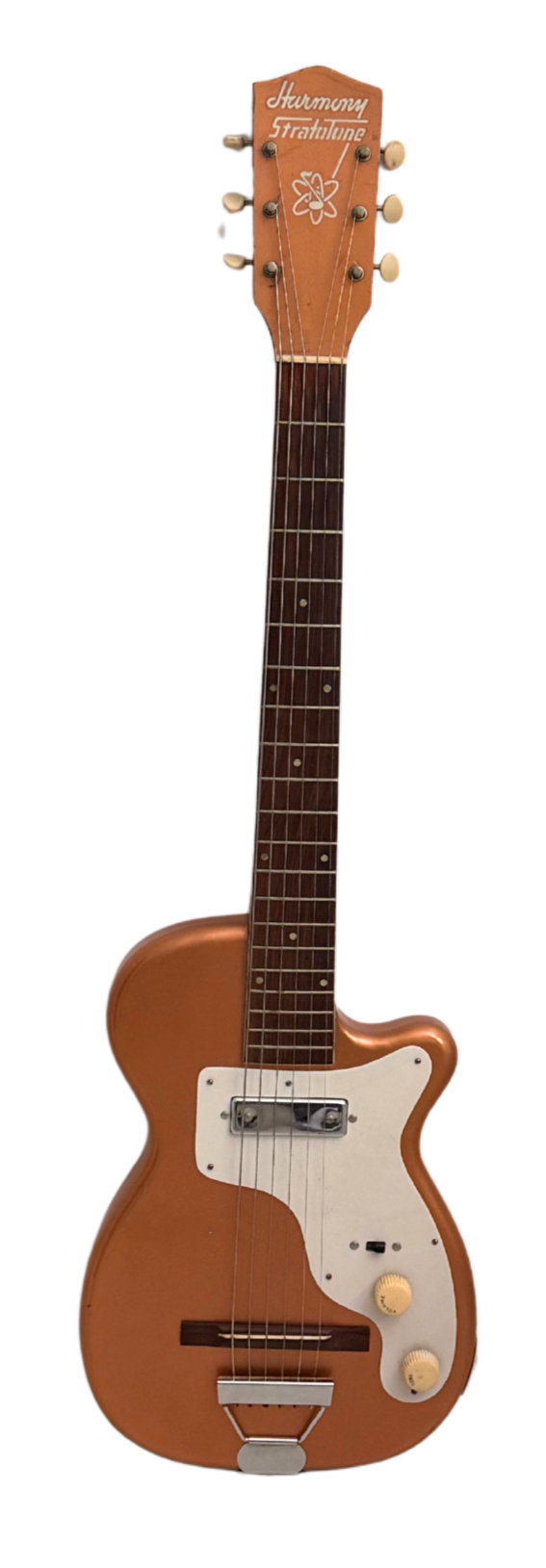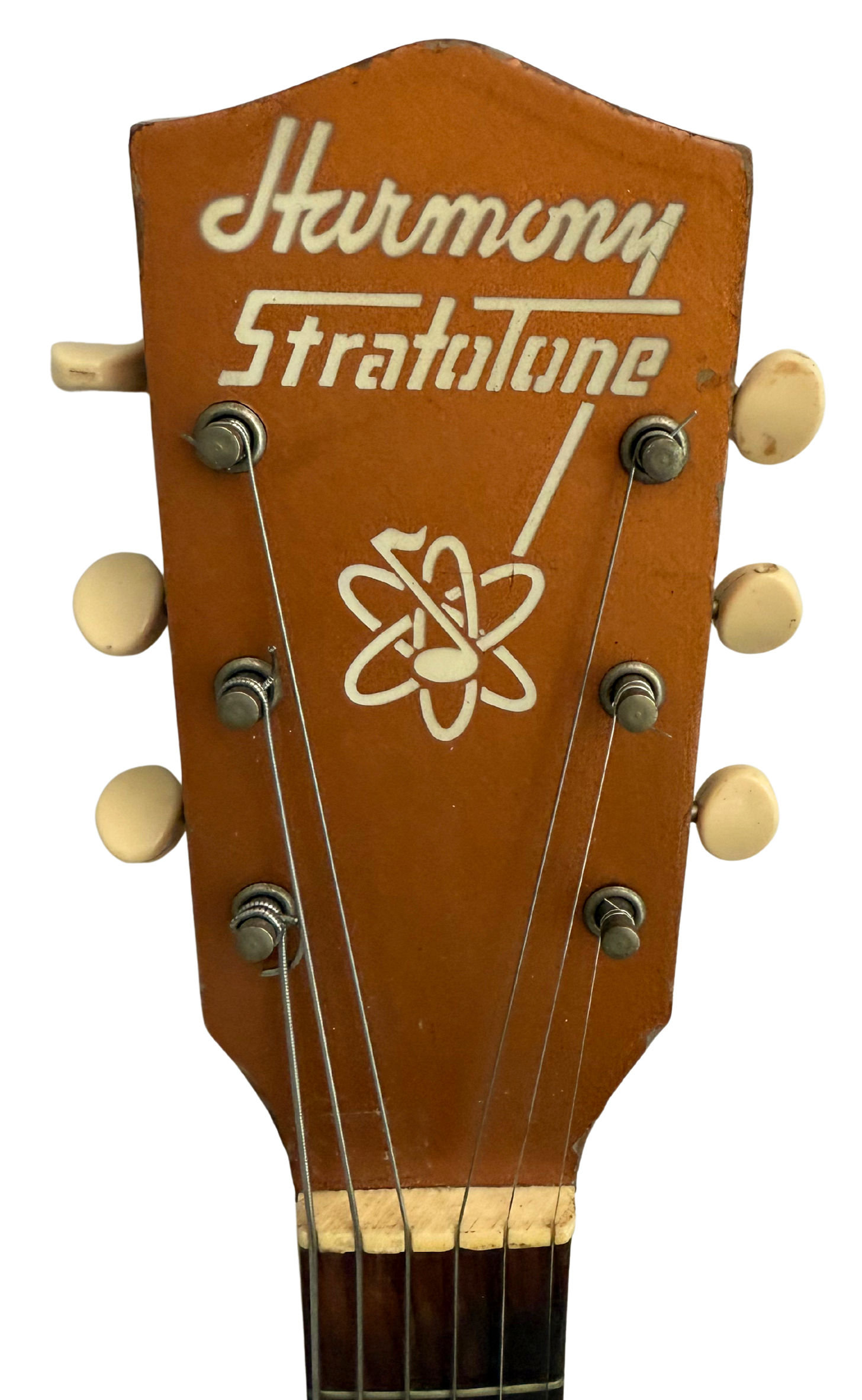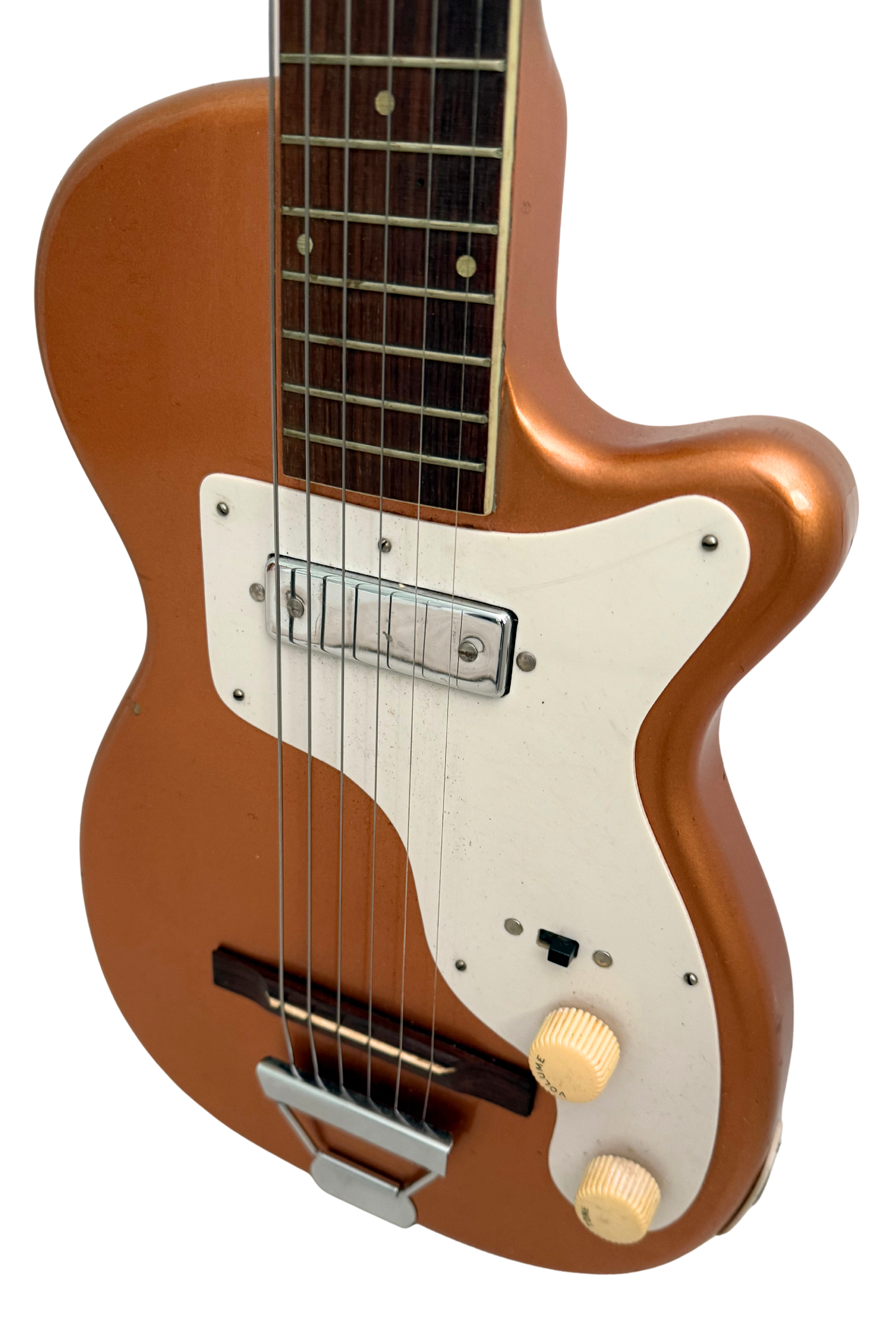Harmony in its heyday was the largest musical instrument company in the United States. They started in 1892, were acquired by Sears in 1916 and broke away from Sears in the 1940’s. They were know for making high quality, professional and affordable acoustic guitars throughout the 30’s and 40’s. They were produced under the Harmony brand name and also sold through larger mail order companies and department stores like Sears under the store’s house brand name. In the case of Sears that was Silvertone.
Harmony made big bodied arch tops and started to electrify those guitars by adding pickups around the late 40’s and early 50’s. Some time around 1952 - 1953, Harmony broke away from its typical big-bodied, hollow, archtop designs and introduced the this guitar. The solidbody H44 Stratotone. The Stratotone was billed as an "easy-to-handle" Spanish electric that was lightweight and thin-bodied. At just three-feet long and 10 5/8" wide (with a scale length of 25 1/4"), the Stratotone bridged the gap between the popular Hawaiian lap-steel guitars and full auditorium-sized archtops. At that time there was a natural evolution between lap-steel guitars and some of the original solidbody electrics of the early 1950s, because guitars like this Stratotone were so small in size. One of the major appeals of the Stratotone was that it was affordable for blossoming baby boomers at a time when rock 'n' roll was really taking off. The name Stratotone and its space age headstock logo reflected the era’s fascination with space exploration.
The first time I saw one of these was in the 1987 movie La Bamba, the story of Ritchie Valens played by actor Lou Diamond Phillips. I was familiar with Ritchie’s music, but I never saw footage of him. Ritchie had played a H44 Stratotone, especially earlier in his career. (Kudos to the filmmakers for the historical accuracy)
I remember sort of laughing at it, like, what was that little mini-guitar. I thought it looked like an electric ukulele or something. As my music tastes and guitar playing evolved I started to trace my rock influences back to the blues and would see Stratotones appear more in rare photos. They were actually quite popular for their tone and playability. The small size and affordability made it easy to buy one and carry it around. They went for about $65 in 1954 compared to $250 for a Stratocaster.
It’s an awesome little guitar. All you need is one of these and a 50’s Fender tweed Champ and you are on your way to Blues tone heaven. I’ve heard a number of guitar dealers refer to it as “The Blues Peanut” due to its size and shape. The lone single coil pickup is known as a Hersey Bar pickup. It has a fairly low output true vintage, low fidelity sound that you just can’t get out of a new guitar. It has one volume and one tone control along with a slider switch that lets you bypass the tone control circuit when switched on. By the mid 50’s Harmony introduced a dual pickup version call the H88 Doublet.
It’s a neck-through design, with a very large neck that fills your hand. The fretboard is made of Brazilian Rosewood and has fairly low profile vintage frets. Most were finished in a copper-bronze color, although there were a small number of them made in gold and some in black.
The Stratotone is a fun little guitar. They sound great for blues, slide and older styles of music. They are easy to carry around. Easy to take on flights, in campers and on road trips. If you’re looking for something that’s different than most of your guitars, this is it. Very cool history and vintage all the way.





